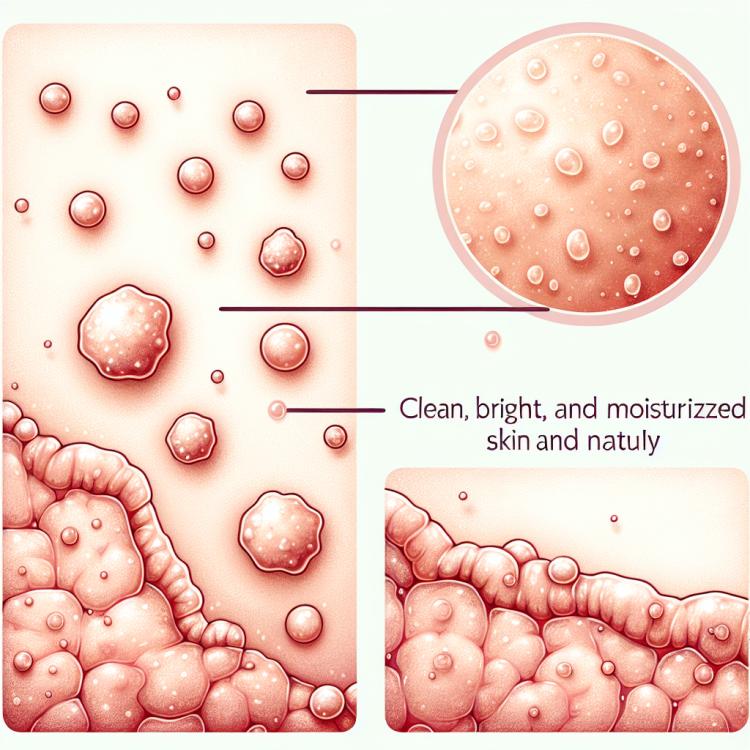
Molluscum contagiosum: causes, treatment methods, and prevention
- Understanding Molluscum Contagiosum
- Etiology of Molluscum Contagiosum
- The clinical picture of Molluscum contagiosum
- Expert opinion on the treatment of Molluscum contagiosum
- Methods for diagnosing Molluscum contagiosum
- Strategies for treating Molluscum contagiosum
- Prevention measures for contagious molluscum
- No interesting facts found for the contagious mollusk.
- FAQ
Understanding Molluscum Contagiosum
Molluscum contagiosum, or contagiosus mollusk, is a common viral skin disease caused by the molluscum contagiosum virus. The pathology is characterized by the appearance of skin papules, usually painless, with a smooth, pearly, or pink surface containing a central indentation. These papules can increase in size and spread over the skin, often causing itching or discomfort in infected patients.
To confirm the diagnosis of molluscum contagiosum, a visual examination of the infected skin areas is usually performed in conjunction with laboratory tests. Currently, there are various treatment methods for this condition, including cryotherapy, laser removal, chemical removal, and the use of topical immunomodulators. However, it is recommended to consult a dermatologist to determine the optimal treatment approach for molluscum contagiosum in each specific case.
Etiology of Molluscum Contagiosum
Molluscum contagiosum is caused by a virus from the papillomavirus family, mainly types 1, 2, 3, 4, and 15. The infection is transmitted through direct contact with an infected person or objects affected by the virus. Vulnerable groups include children, adolescents, and individuals with weakened immune systems. Skin exposure, microtraumas, and damage to the epidermis serve as entry points for the virus, promoting the development of infection.
- Viral agent: Molluscum contagiosum is caused by a virus from the papillomavirus family.
- Types of virus: The main types that cause infection include 1, 2, 3, 4, and 15.
- Modes of transmission: The infection is transmitted through contact with infected people or objects carrying the virus.
- Risk groups: Children, teenagers, and individuals with immune deficiencies are more susceptible to infection.
- Entry mechanisms: Micro-injuries and skin damage create a pathway for the virus into the body, facilitating the development of infection.
The clinical picture of Molluscum contagiosum
Molluscum contagiosum manifests as small, bumpy, firm nodules on the skin with a dimple in the center. These lesions typically have a pearly or papillomatous texture. They can be single or multiple and can affect various areas of the body.
Most patients with molluscum contagiosum have no symptoms, but sometimes itching, discomfort, or inflammation may occur in the affected area. Isolated skin lesions may resolve on their own, but treatment may be necessary to prevent the spread of infection and cases of chronic infection.
- Presence of bumpy nodules: A classic sign of molluscum contagiosum is small, firm nodules on the skin, often with a depression in the middle.
- Pearly or papillomatous texture: The lesions usually have a characteristic shiny hue or a bumpy surface.
- Single or multiple lesions: Nodules may appear alone or in groups on various areas of the skin.
- Possible itching and inflammation: Some patients experience discomfort, itching, or an inflammatory reaction in the affected area.
- Detection of infection through visual inspection: For diagnosing molluscum contagiosum, a visual examination of the skin areas is usually sufficient.
Expert opinion on the treatment of Molluscum contagiosum
The treatment of Molluscum contagiosum typically involves various methods, including observation for spontaneous resolution of the lesions, cryotherapy, the use of topical medications, mechanical removal of nodules, and laser removal. Experts usually recommend choosing the treatment method based on the characteristics of the infection – the size of the nodules, their location and number, as well as the patient’s immune system status.
Some experts recommend active treatment to prevent the spread of the infection and reduce the risk of infecting others, especially in individuals with weakened immune systems or in cases of multiple lesions. Patients should discuss the best treatment approach with their doctor, taking into account individual characteristics and the potential side effects of various methods.

Methods for diagnosing Molluscum contagiosum
The diagnosis of molluscum contagiosum is usually based on clinical examination and the characteristic external manifestations of the disease. To confirm the diagnosis, dermatoscopy or biopsy of the affected skin may be required. These methods allow the investigation of tissues to identify viral infections and determine the characteristics of the affected areas of skin.
Additional diagnostic methods for molluscum contagiosum include virological studies, such as virus cultures or PCR tests, which can help in identifying the virus causing the disease. After obtaining the diagnostic results, the doctor can determine a treatment strategy to effectively combat the infection.
- Clinical examination and history: The main method for diagnosing molluscum contagiosum, includes a visual inspection of the affected areas of skin and an analysis of symptoms that may indicate the disease.
- Dermatoscopy: Examination of the affected areas of skin using a dermatoscope for a more detailed study of the characteristics of the rashes and texture.
- Biopsy: Taking a sample of tissue from the affected skin for laboratory analysis to identify viral infections and establish a diagnosis.
- Virological methods: Include viral culture and PCR tests to identify the virus causing molluscum contagiosum.
- Clinical laboratory studies: Taking skin samples for microscopic examination or cultures to detect viral agents and confirm the diagnosis.
Strategies for treating Molluscum contagiosum
In addition to this, an important aspect of treating molluscum contagiosum is the prevention of reinfection and protecting others from potential infection. Patients are advised to avoid self-removal of the lesions, maintain good skin hygiene, avoid close contact with infected individuals, and use protective measures when in active contact with patients who have molluscum contagiosum.
- Local removal methods: Cryotherapy, chemical removal, electrosurgery, and laser removal allow for the destruction of molluscum contagiosum nodules and prevent their spread.
- Treatment with antiviral medications: The appointment of antiviral agents may contribute to accelerated healing of affected skin and suppression of viral activity.
- Self-removal of nodules: It is recommended to avoid self-removal of molluscum contagiosum nodules to prevent the risk of reinfection and complications.
- Prevention of reinfection: Patients should follow skin hygiene rules, avoid close contact with infected individuals, and use protective measures against possible reinfection.
- Consultation with a doctor: It is important to seek medical assistance for the appointment of an optimal treatment course based on the individual characteristics of the patient and the nature of the disease.
Prevention measures for contagious molluscum
For those at risk of contracting molluscum contagiosum, preventive measures such as wearing protective clothing when in contact with infected patients or in public places where the virus may be present can be beneficial. Consistent adherence to meticulous skin hygiene and avoiding strong abrasion areas can help prevent infection with molluscum contagiosum.
- Avoid close contact with infected individuals or objects, especially when there are visible signs of illness.
- Pay careful attention to hygiene, regularly wash hands and body, especially after contact with public surfaces.
- Teach children to follow personal hygiene rules to reduce the risk of spreading infection in school and child environments.
- Avoid self-removal of molluscum contagiosum nodules to prevent the spread of the virus to other areas of skin or objects.
- Use protective clothing and personal hygiene items when in contact with infected patients or in public places where the virus may be present.
No interesting facts found for the contagious mollusk.
Despite extensive research related to molluscum contagiosum, no unique or remarkable facts about this condition have been discovered to date. This lack of interesting facts may primarily be due to the fact that molluscum contagiosum is a fairly well-known and studied condition within dermatology and virology.